No, it’s not your imagination. Summers are getting hotter. Extremely hot summers – the kind that was practically unknown in the 1950s – have become commonplace. The scorching summers events of recent years –the droughts, wildfires, and heatwaves – are part of this broader trend.
So, yes, this summer will probably be hotter than anything your grandparents ever experienced when they were your age. Today’s generations have to put up with a lot more heat than their predecessors.
These days, when it’s hot outside, and heat seeps into your home, it’s almost impossible to do anything indoors. You’re sticky, sweaty, damp – it’s just too uncomfortable.

Contents
The Hottest Gear for Cooling Down
But are we supposed to languish helplessly in the heat during the summer months? Should we resign ourselves to staring blankly at the boob tube while sweat beads pop from our foreheads?
Of course not! Below you’ll find tips to keep your house cooler when the thermometer creeps up this summer.
1. Good air-conditioning is the way to go.
This may sound obvious, but your first line of defense against oppressive summer heat is good air conditioning. There’s just no substitute. Good air-conditioning lowers the air temperature in your home. An AC’s dehumidifying effect also improves the efficiency of your body’s cooling system: sweating.
Humid air makes it more difficult for sweat to evaporate. This is why the humid days of summer feel even warmer. The so-called “heat index” quantifies this phenomenon.
Simply put, the heat index measures what the combination of humidity and temperature feels like to the human body.
For example, a 34°C day with 75 percent humidity will feel like 51°C to the body. This has considerable consequences on your health and comfort.
If you don’t have central AC but you do have windows, your best option is a window air conditioner. Be warned, though. If you decide to shop for one, you’ll confront a range of brands and types of window AC systems.
We suggest you consider the Midea MAW05M1BWT 5,000 BTU window-mounted mini-compact air conditioner. We use this unit in some of our offices. This model is excellent for cooling a room of up to 150 square feet.
This AC unit is affordable, quiet, efficient, and features seven temperature settings and two fan speeds, among others.
If you own your place but don’t have a central HVAC, you can try another kind of AC installation. Ductless or mini-split air conditioners can be as efficient as central HVAC systems. They are also easier to install in an existing home because they don’t require ductwork.
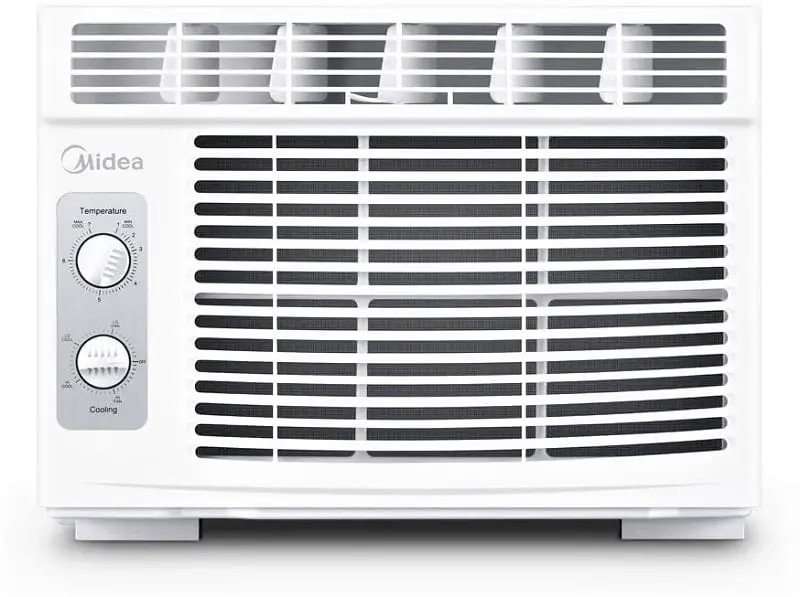
2. Use a portable AC if need be.
We’ve also tried portable air conditioners. These machines sit inside a room and vent the heat outside through a flexible hose. They’re less efficient and more expensive than window air conditioners, so they’re not our first recommendation.
But there are situations when only a portable AC will work. These might include basement spaces or rooms without windows.
If a window AC isn’t an option, consider the Black and Decker BPACT08WT Portable Air Conditioner. This is the quietest and most efficient unit we’ve found after testing quite a few during the hottest months.
This floor-standing portable AC unit provides steady, fast, effective cooling for rooms up to 150 square feet.
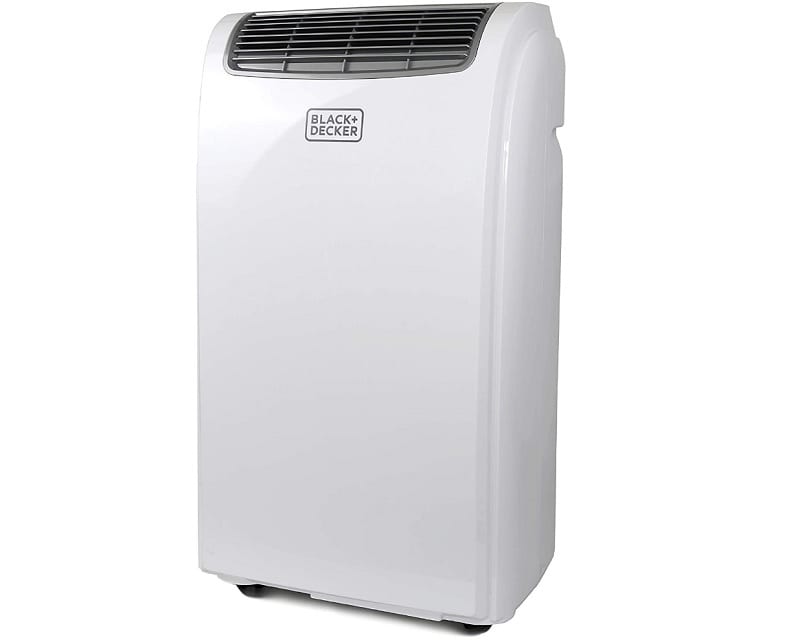
3. Fans are a good option.
Fans are another option. Fans don’t cool the air, but they can make you feel cooler. They do this by generating a breeze that helps sweat evaporate more quickly off of your body.
Fans can also help distribute conditioned air to other parts of your home. This especially useful in rooms that circulate air poorly even with a central HVAC system.
A room fan is the most versatile type, because it doesn’t require installation. This appliance is easy to move around your home. With a room fan, you can direct a breeze where you want it, too.
A ceiling fan involves a more complicated installation than a room fan but it doesn’t require any floor space. The best models will give you more options on speed and control. Manufacturers offer a wide variety of aesthetic choices, as well.
A window fan can be useful for pulling fresh air into a stuffy room and pushing hot air out. But unlike the first two fan options, a window fan requires an open window. This makes a window fan impractical when you have air conditioning and want to distribute the conditioned air.
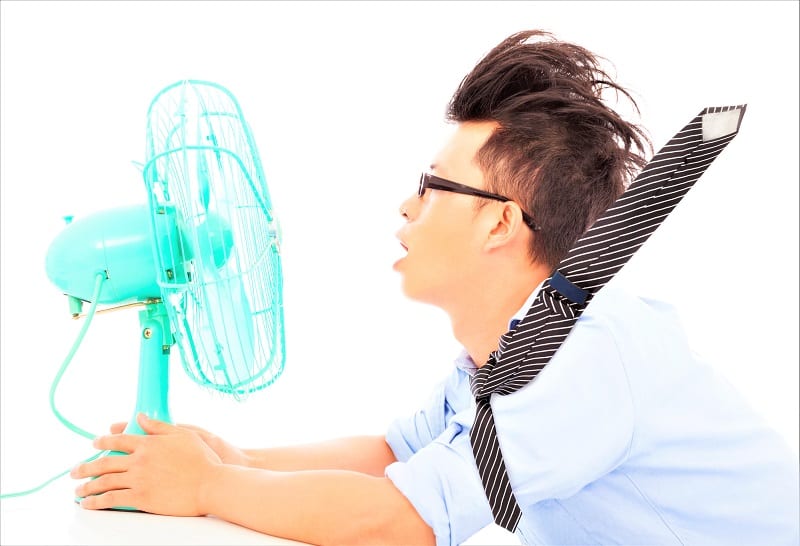
4. Use cooler sheets.
The sheets that you like most of the year may feel too warm in the summer heat. So, just as you keep flannel sheets for cold winter nights, keep lighter sheets for summer.
Soft, breathable, lightweight bedding can help keep sleepers comfortable through the hottest summer nights. Bamboo sheets are known for being breathable. This prevents your body from overheating through the night.
Bamboo fiber is a versatile textile woven for a lustrous, matte, or textured feel. The lightweight fabric wicks away moisture and prevents heat retention. They are durable, but you should take care to preserve the feel of the soft fabric.
Of course, when it comes to summer sheets, you have cotton and polyester and microfiber options, as well. If – like us – you prefer cotton, we recommend a percale weave.
This is a crisper, ‘drier,’ more breathable cotton weave than sateen and flannel. Cotton percale sheets are pleasant year-round. But they are perfect for the summer.
That said, linen sheets are even more breathable than cotton percale. They are seeing a rebirth in the market these days. For years, you couldn’t find them anywhere. Now you’ll find quite a selection online.

5. Use blinds, shades, or black-out curtains.
Up to 30 percent of unwanted heat in your home comes through your windows. This heat and the walls and ceilings of your home create a greenhouse effect. That is, sunlight and heat enter your house, but cannot escape.
Window blinds, shades, or black-out curtains can limit the sunlight and heat entering your home through the windows. We favor the Deconovo Room Darkening Thermal Insulated Blackout Window Curtain. This solid color blackout curtain features a smooth and elegant fabric with a silky touch and a beautiful drape.
Solar film is another option when it comes to window shading. This is a stick-on plastic sheet that deflects the heat and UV light coming through windows.
Solar film will not only reduce indoor temperatures but will also help prevent the fading of rugs and upholstery. The disadvantage here is that it can create a mirror effect indoors. This reduces your ability to see what’s outside.
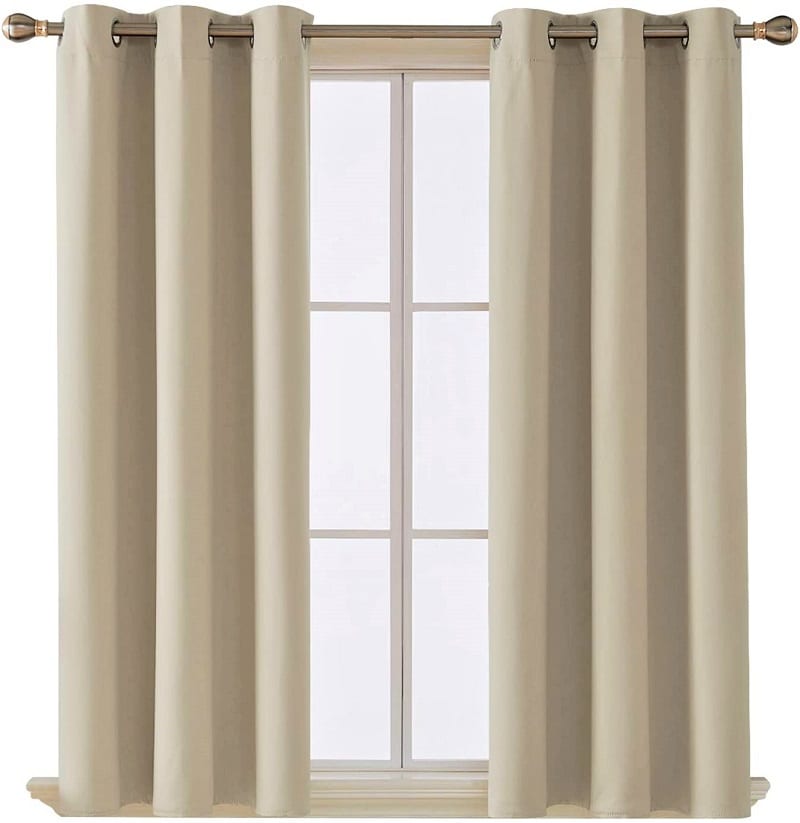
6. Insulate your home.
Good home insulation and air sealing are among the most effective ways to keep unwanted heat and humidity out. When it’s hot outside, insulation keeps heat from seeping indoors. It also helps to keep cool air in.
Certain types of quick insulation like spray foam keep cool air from escaping your living spaces. You can use products like Great Stuff to seal leaks and keep cool air from escaping.
You should also check for leaks around windows in the summer. Remember, air can easily slip through the gap between the frame and the sash. Weather stripping fills that gap, significantly reducing leaks.
These strips of plastic, rubber, or foam tape spring open gently to fill gaps. The best types are durable but slick enough to let the windows open and close easily. You can use the strips to seal any gaps around your AC units, too.
Those gaps underneath doors are another source of leaks. Door sweeps like the Suptikes Door Draft Stopper close the gap beneath the door and the floor.
This sweep’s flange just barely touches the floor. This allows the door to swing freely even as the flange stops air from moving in or out of the room.
Often, you can install door sweeps by attaching them to the door face. Other types – like the Holikme Twin Door Draft Stopper – you slide over the length of the door bottom.
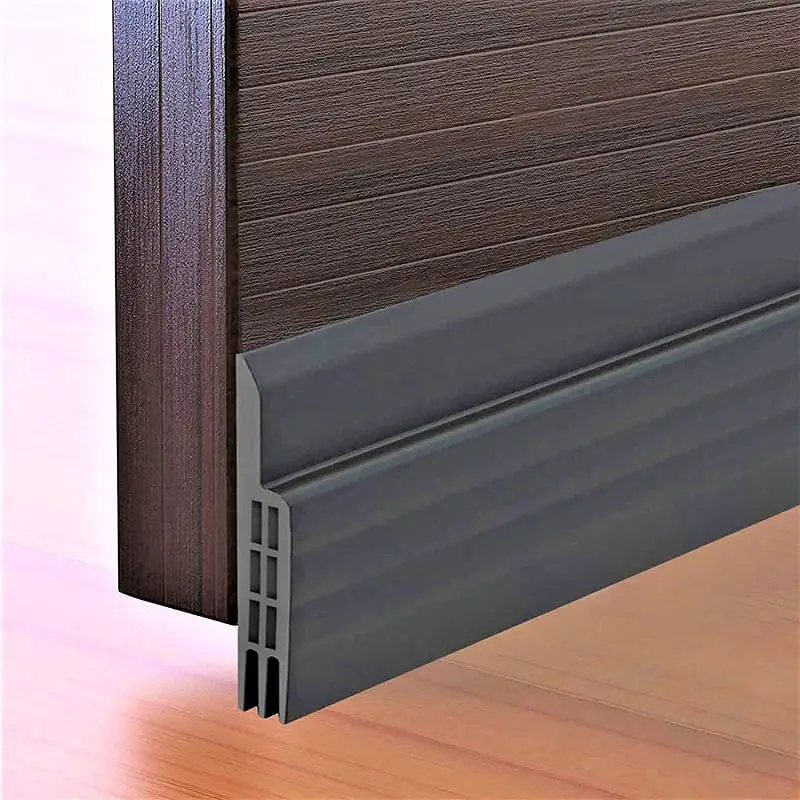
There are many more less-obvious places where air, heat, and humidity can pass through your walls. External stove and dryer vents and plumbing lines can allow cool air to escape or hot air in. You can caulk or use spray foam to close these gaps.
Of course, the downside to all this insulation and sealing is that the air can feel a bit stuffy over time. If that’s the case in your home, try using an air purifier. That should keep things fresh and clean.






